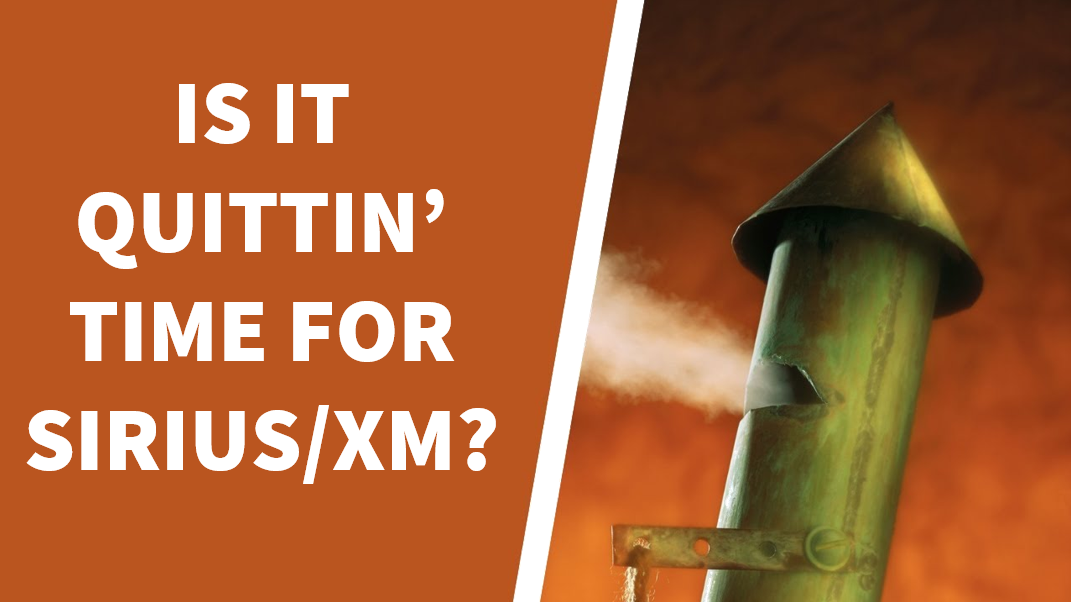
Did COVID turn us into a society of quitters?
Americans shy away from that label. After all, we celebrate workers everywhere each September on Labor Day. And we admire those who roll up their sleeves and pull themselves up by their bootstraps.
But something happened during the pandemic that seemed to impact our societal stick-to-it-tive-ness. That’s why it got quickly branded with the moniker, “The Great Resignation.” At its height in 2022, a record 4.5 million workers – approximately 3% of the U.S. workforce – quit their jobs.
And here we are two years later, and that mindset has very much become a part of our new fabric. CNBC reporting on a recent LinkedIn/Microsoft study indicates nearly half of professionals in the U.S. (46%) says they’re thinking about quitting their job.
(Why didn’t we invest in Indeed and Zip Recruiter?)
And my theory is that the “I Quit” mindset has now bled over to other activities in our lives. Maybe it was the utter bleakness and angst caused by the pandemic, but it seems like Americans are less likely to put up with anything that just doesn’t sit right. Rather than wait it out and perhaps give things time to settle in and adjust, our tendency is to now push the “escape” button and head for the exits.
It didn’t used to be this way. Back in 2023, TRG Datacenters reported the social media platform consumers were most motivated to delete was Instagram. Overall, roughly 13% of its user base were searching the internet to figure out the best way to delete their account. But when you’ve got 2 billion users from around the world, a certain attrition rate is to be expected.
Maybe that’s what Elon Musk calculated when he joined forces with Donald Trump. While there’s no argument about his gain in influence, especially since the election, Twitter – or X, as he’s rebranded it – very much became an arm of the Trump campaign, including a modification of the algorithm to ensure users regularly see Musk’s tweets.
So what did it cost X in subscribers?
According to PCMag, 115,000 left the platform after the election. (But on the other side, The Wrap reports that as of last week, X has gained back similar numbers of new acolytes.)
We’ve seen a lot of celebrity quits in recent week, including horror author Stephen King who declared X was “too toxic” for his sensibilities. In quitting the platform, King invited fans to “Follow me on Threads, if you like.”
Actually the big winner from all those “X quits” has been Bluesky, a social site that resembles the old Twitter (even setting a limit of 200 characters per post). In fact, Twitter founder and former CEO, Jack Dorsey, developed Bluesky back in 2019. According to a USA Today story last week, Bluesky now has 20 million users and continues to be on the upswing.
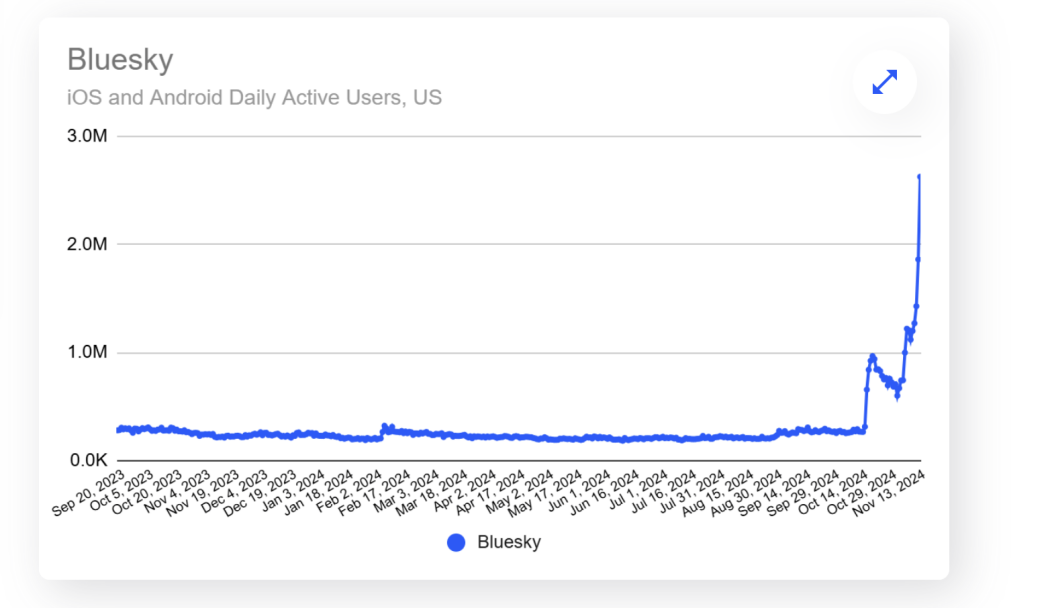
But perhaps the most salient message is just how fickle we consumers really are. After all, Threads experienced a meteoric rise when it first launched nearly 17 months ago, but its trajectory has been more like a Roman candle – a fast rise followed by a steady descent. (At least, Stephen King is using it.)
The phenomenon in play here may be that incumbent technologies and platforms, in particular, are vulnerable to our whims, especially if they’ve been around for a while. A story in Forbes by Brad Adgate points out how Google search is more than a quarter century old, while Facebook is almost of legal age – 20 to be exact. Not everyone is enamored by these legacy tech brands, opening the door to new search engines, like OpenAI, as well as social newcomers such as Bluesky.
Of course, calling it quits on subscription services isn’t new, but the rate of speed at which it’s happening fits right into this post’s main point: we think of nothing of giving any platform or service the boot if it isn’t satisfying us at the moment.
It turns out 2023 was a record year for cancelling a subscription, such as Spotify, Netflix, or the dozens of others that provide content for a monthly fee. We know from our Techsurveys that rising/aggregated fees on these services hit an all-time high this year, opening the door to the “cycle of quitting.”
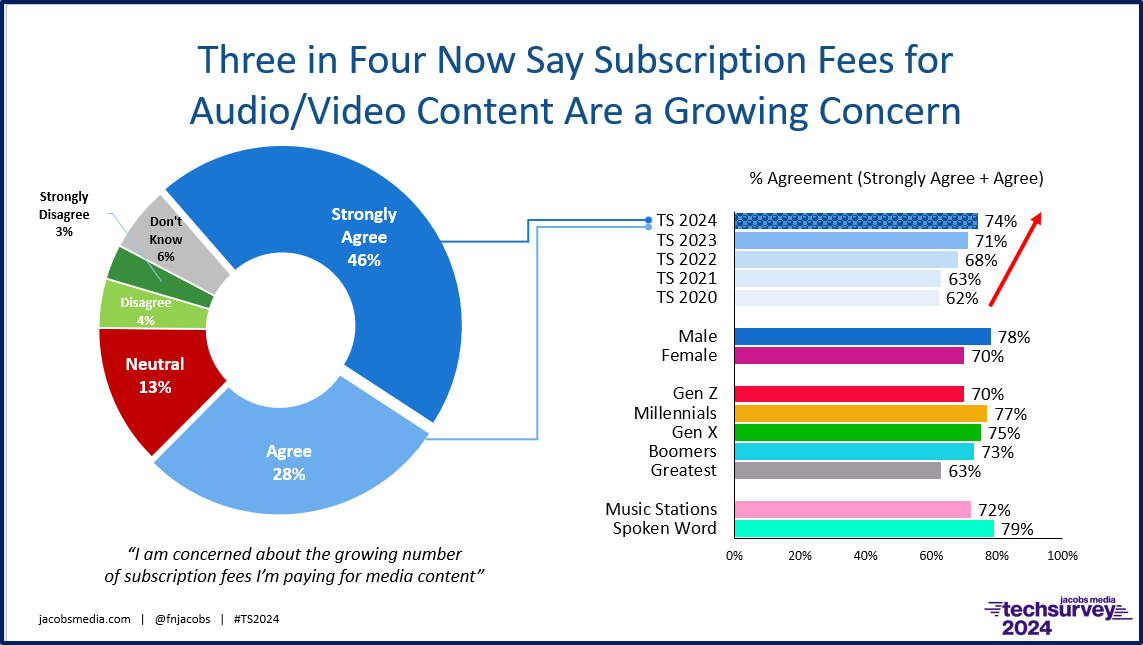
The New York Times nailed the pattern in a story by John Koblin that ran this past April. In “Americans’ New TV Habit: Subscribe. Watch. Cancel. Repeat.,” he captures the sequence of events that regularly takes place as we chase the content we covet.
It turns out 29 million consumers – about one-fourth of streaming subscribers – have deep-sixed one of these services over the past two years.
Expect this pattern to accelerate as it becomes more apparent to sports fans their favorite games are now the possession of streaming services like Netflix, Amazon, Apple, Peacock, or others. Juggling subscription services has become a critical skill in the once sedentary art of simply watching TV.
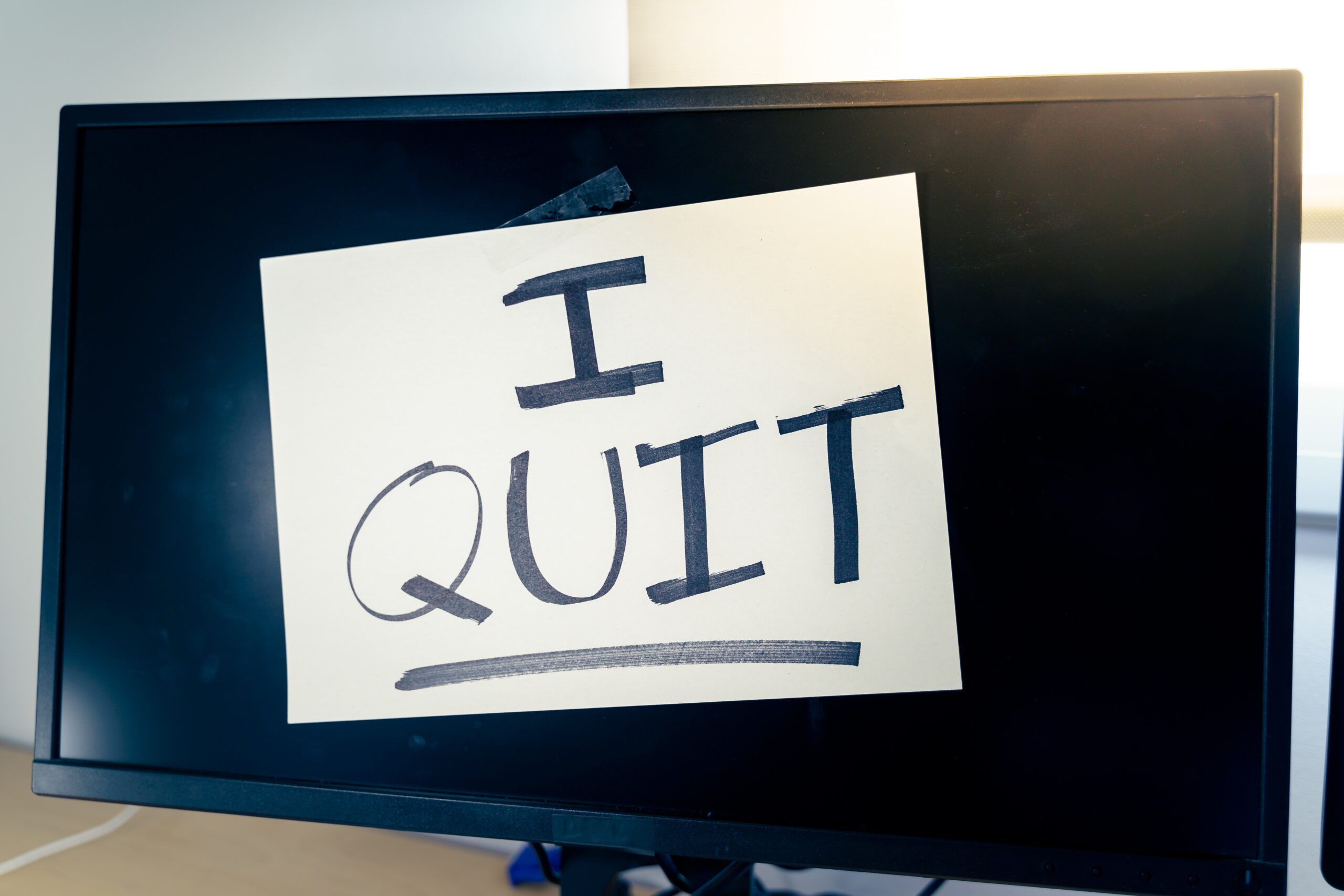 Not anymore. Thankfully, streaming services have made it easy, if not almost brainless, to execute – while we’re eating, standing in line at the grocery store, or waiting for our oil to be changed. Quitting is now a no-brainer.
Not anymore. Thankfully, streaming services have made it easy, if not almost brainless, to execute – while we’re eating, standing in line at the grocery store, or waiting for our oil to be changed. Quitting is now a no-brainer.
Once the totals are in, it would not be the least bit surprising if 2024 set the record for cancellations of these streaming services – further proof our media habits are changing. Koblin quotes Jonathan Carson, CEO of Antenna, who notes that “in three years, this went from a very niche behavior to an absolute mainstream part of the market.”
Everyone in the subscription business will be affected, including our friends at SiriusXM. They’ve turned roadblocks into quitting their service into an art form. If you’ve experienced the Kabuki dance that reliably takes place when you try to quit SiriusXM, you have a new understanding of what persistence is all about.
Similar to the rigmarole would-be buyers or lessors have to endure in new car showrooms, SXM phone operators (you have to talk to an actual human in order to terminate the service) are well-trained in systematically ratcheting down the price until the exhausted subscriber eventually gives in and agrees to a new contract. It’s archaic and annoying, but that’s the way they designed it at SXM. And they’ve gotten away with it.
Until now.
As reported in a Radio Ink story yesterday, New York Attorney General Letitia James (remember her?) sued SXM. The suit claimed the satellite radio company “illegally traps people into subscriptions” because of its long cancellation procedures. And New York Supreme Court Judge Lyle E. Frank ruled against SiriusXM last week.
While SXM claimed its subscribers use the cancellation calls as a way “to get a discount on their service,” complaints from consumers revealed SXM operators were instructed to use a six-part conversation that included as many as five different retention offers.
Judge Frank also noted that while it’s quick and easy to purchase a service plan from SXM, the average phone call to cancel lasts more than 11 minutes, while trying to cancel online requires 30 minutes on average.
 It turned out it’s easier for Howard Stern to cancel his Sirius contract when it expires than it is for any of us to do the same.
It turned out it’s easier for Howard Stern to cancel his Sirius contract when it expires than it is for any of us to do the same.
To emphasize the need for smoother cancellation, the Federal Trade Commission has a new rule going into effect in mid-January that requires companies like SXM, Netflix, and Spotify to make it as easy to get out of a subscription as it was to sign up in the first place.
With a new administration taking office just a few days later, it remains to be seen how media and entertainment services will be impacted. Just yesterday, Representative Marjorie Taylor Greene announced that as part of a new House subcommittee looking into “wasteful spending” will initially go after NPR. The story was covered in today’s Inside Radio.
As the song goes, “Quitters gonna quit.” Now governments are going to make it much easier and seamless to pull it off.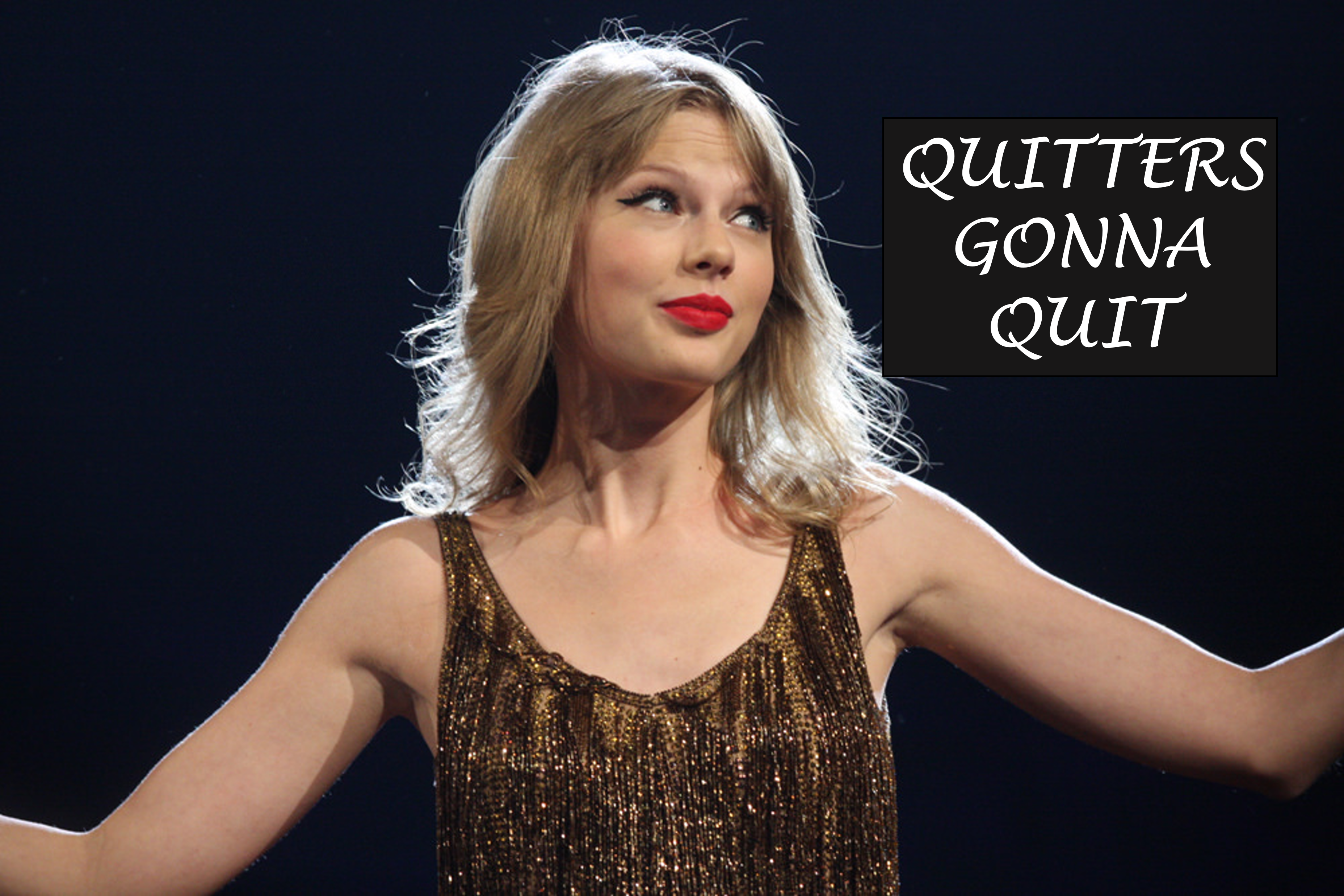
For broadcast radio, there’s good news here. AM/FM’s “no subscription fees” policy sets it apart from most of today’s media platforms and brands. Thus, no cancellations or subscription juggling involved. Your favorite station doesn’t send you a bill at the end of the month. Radio is FREE.
But the not-so-good news is that consumer fickleness and resistance to putting up with the least bit of friction or a bad experience has increased. When they get pissed off by a medium, channel, or station, their inclination is to get out and go elsewhere. There’s no need to leave a note or email of explanation.
A shorter leash puts even more pressure on over-the-air radio, already struggling with service cutbacks, job losses, and an overabundance of ads. In our research studies, we need to do better than just talk to those who stay with radio through thick and thin. The disillusioned, the angry, the ex-pats, and the quitters need to be accounted for, too.
- For Radio, The Perils Of Rebranding - May 30, 2025
- There’s No Failure In Radio - May 29, 2025
- It’s Not An Innovation If You Can’t Make It Work – And Last - May 28, 2025




Let’s see, where do listeners fall in the hierarchy of concerns for most radio stations? Off the top of my head, it seems like this:
1. Upper management bonuses
2. Investors
3. Debt Service
4. Advertisers
5. Physical plant
6. Digital transition
7. Synergies, including production, technology, sales, and talent costs
8. Programming costs
9. Listeners
I suspect that further reflection would add a few more layers between the top and the bottom.
I’ve probably left
Brian, it’s an impoortant question and one that is not asked nearly enough. We have long advised stations/companies to bring an empty chair into conference rooms to symbolize that often neglected listener you meniton. Without him/her, these entertainment brands mean nothing. Thanks for commenting.
I think you better take a closer look at Spotify’s user stats, not to mention the stock price which has almost doubled in 2024.
https://backlinko.com/spotify-users
Jimmy, I’ve looked at it. It took Spotify years to make a profit. if you consider they launched in 2008 and haven’t made a real profit, that’s a lot of runway and lakes of red ink. Any radio company with those losses for that long would’ve been out of business years ago. It’s tempting to compare audio platforms until you get to the gnarly details. Today’s post didn’t suggest broadcast radio is any better or smarter than web-based companies. The business models are just different.
RADIO IS FREE. ALWAYS THE KEY!
But there’s a joker in the “free” deck. Modern car infotainment systems, like the one I have from Hertz this week, seem to default to your mobile phone connector (Apple or Android) before offering AM or FM and, as most phone users have opted to pay for unlimited data, whatever audio preference is on their phone is just as “free” as radio is.
In other words, the marginal cost of the alternative has become zero, and radio loses.
If your product’s main advantage over your competitors is “its free”, you’re not gonna last long.
Not arguing that. The product needs to be worth listening to. Those who have lost sight of that deserve to not “last long.”
Radio continues to lose relevancy to its listeners. Between the records matter as much as great personalities!
Key Words: “For broadcast radio, there’s good news here. AM/FM’s “no subscription fees” policy sets it apart from most of today’s media platforms and brands. Thus, no cancellations or subscription juggling involved. Your favorite station doesn’t send you a bill at the end of the month. Radio is FREE.”
We still need to clean up the product and improve the listener experience … but so much of what you wrote today points out an advantage.
My comment to Russ Crupnick and your last line, Mike. The “free” thing IS a steel sword (thanks, Bill Moyes) if and only if the product and the experience are worthy.
Oh my Fred, so much to unpack. First, we need to separate audio subscriptions from all the other subscriptions. We can cancel Apple TV after a season of Bad Monkey, or drop X if we don’t agree with Elon, or stop the Cigar of the Month Club. But the churn on audio subscriptions has been very low. Forget surveys (including my companies) and go to the churn data reported in filings. Churn for Spotify is on the decline, and is less than 2% monthly. Price increases had no notable impact on Spotify churn. Sirius’s churn is even less. So for radio folks waiting for mass cancellations, it’s going to be a long, long wait.
Okay, let’s go back to the surveys. Being concerned about fees doesn’t necessarily mean you’re going to actually cancel. What we say to survey companies (mine included) and what we do are frequently two different things (ask President Harris- whoops). Respondents may express anger or frustration, but they don’t necessarily take action. Looking at “subscriptions” in general masks the passion and connection listeners may have with their favorite audio service. At the peak of inflation in 2022 we conducted a study and got similar negative feedback about subscriptions and intent to spend on entertainment. But when you asked actual Spotify, Sirius or Apple Music subscribers what they would do with those services if they had to cut spending, they were much more likely to say “I can’t live without it”. The same was true for Netflix users. It may be less true for fringe Video On Demand services but we shouldn’t confuse Peacock with Spotify. The leading music streaming services, and Sirius, have built a bond with their audience. KPI’s for the leading streaming services are quite strong including loyalty rates, frequency of use and value proposition scores. That’s why churn rates are so low. Yes, the cancellation experience should be transparent for those who wan’t out. Too many seem stuck on an argument comparing ad-supported vs. paid subscriptions. That’s a settled argument. There are over 100 million paid subscribers to audio services in the US. The focus should be on the experience, whether I pay for that experience with my credit card, or my time.
Fundamentally, we agrree on a lot here, Russ. I concur that concern about fees doesn’t necessarily lead to cancellations. But it does mean a consumer is “on alert” to consider all the services he/she is paying for. Some indeed are “can’t live without,” but others end up being “why did I sign up for this in the first place?” The weight of paying for all these services is what’s at stake here. And while some get a pass because they are truly valued (“I can’t live without it”), others are replaceable. And yes, hard to argue with that last point – the experience is the thing. But how great an experience are all these platforms offering? I think most subscribers could easily define the differences. And it’s where radio is most vulnerable.
Thanks for the “conversation.”
As others have already said, radio’s appeal has to be more than just “It’s free.” A great appeal, to be sure, just not enough. I can go look at rocks in my backyard for free. But if radio is going to offer unbearably long commercial sets and announcers covering multiple cities saying nothing of interest to me, well, I’d just as well go to the backyard where I can enjoy more rocks with less talk.
Clark’s comment… “It’s FREE”. And Mike’s, “clean up the product and improve the listener experience”. I CAN simply press the button on my Jensen or Bose Wave radios, or my Sony transistor for baseball games when I’m outside and, voila! If only there was something worth listening to on commercial radio. And to top it off, during the tropical Hurricane weather season, just ending 11/30, the radio coverage and reliability is becoming ever more meager. We got slammed over the past two years. Though I can receive 50+ FMs from 3 markets here in SWFL, I listen exclusively to NON-COMMs (a Classic Hits, a Variety/AAA and occasionally 2 NPR stations). AND I COME FROM COMMERCIAL BROADCASTING! So, I presently subscribe to Spotify, plus Netflix and Amazon Prime. (And FYI: Instacart, Walmart+, Door Dash and Grub Hub, so I rarely GO food/grocery SHOPPING). And I haven’t owned a vehicle since 2014. I Uber/Lyft or rent a car everywhere. And I’m in my 60s. So, what’s radio missing with this guy and so many consumer?
As I wrote to Dave Manzi, “free” is a wonderful advantage, as is radio’s strong distribution. When the content’s lacking, none of that matters. I have long talked about narrow audience research that only looks at radio vs. radio. The competition is everyone, something that has simply never been factored into the equation. Thanks for the comment.
Fred, everyone knows how much I love radio. For 45 years I’ve had the privilege of archiving Michigan Football games from the press box at The Big House and I always use the RADIO audio versus TV, because the coverage is far more exciting. Over the 64 years that I’ve been “in radio” I’ve noticed how so much of it sounds the same. It used to be that each city or market had “a sound” that was exclusively theirs. Now, that distinction seems to be just a distant memory. I find that, especially while traveling, I listen to two sources, and neither are broadcast radio. I gravitate to SiriusXM when one of their major marquee talents are on the air, or to an Internet station like: keener13.com, wixy1260online.com or BackWhenRadioWasBoss.com. Why can’t a commercial station sound as good? Maybe someday they will. I hope I live to see (and hear) that day.
Comparisons are always tricky, Art, so I won’t go there. But it hard not to yearn for a time when radio’s strong personalities and local roots separated it from all other media. Those early characteristics would be wonderful difference-makers today. Thanks for being radio’s best friend…and biggest fan. And happy holidays.
I think a lot of the churn is due to the price increases from almost every streaming service, plus almost all now charge extra for 4K. At some point you just ask whether the price increase cN be justified based on what you watch. As for audio, when paid is more attractive than free, the market is telling radio that your price and value are aligned.
I agree with you, Bob, and other comomenters that “free” is only a benefit when the value is obvious to consumers. Radio used to be a no-brainer – truly a great deal. Not so today.